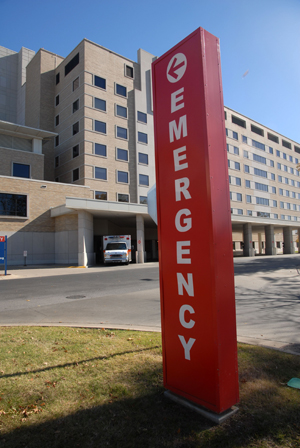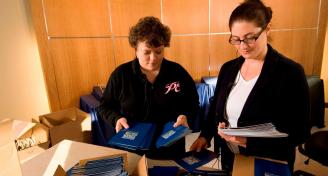Expect the Unexpected: Emergency and Contingency Plans for Events
 The late season Hurricane Sandy could impact the mid-Atlantic area next week, and that has us dusting off emergency and contingency plans to prepare for the possible impact on client events.
The late season Hurricane Sandy could impact the mid-Atlantic area next week, and that has us dusting off emergency and contingency plans to prepare for the possible impact on client events.
When it comes to producing an event, uninvited surprises (like hurricanes!) are inevitable. It is up to the event planning team to plan for and minimize potential impact before anything is apparent to the attendees. Planners must look beyond the basic security steps and place developing emergency procedures as an equal priority as any other top logistical priority. Although it may seem like a ludicrous question during an event, where would everyone go if a tornado was targeted to spin its way through the main ballroom? Are any event staff members trained in CPR and first aid? These questions and many others can arise within seconds in the midst of an emergency and attendees will be looking to the meeting planner as the leader.
Instead of viewing an emergency in a negative light, a meeting planner shows professionalism by recognizing its possibility and being prepared. A key priority for a meeting planner should be to ensure that the venue has a contingency plan that coordinates with the city or town. Following Hurricane Katrina, New Orleans and the State of Louisiana implemented a unified emergency communications system that ensures a controlled flow of information throughout the tourism industry in emergency situations. Such a plan will ensure that each person in attendance at your program is placed under the best conditions possible at the time.
On-site staff should also be prepared to assist with emergency situations within the event venue. If a fire breaks out within the venue, staff members should know where the closest and safest exits are and help to direct attendees. If there is a bomb threat, event staff should be prepared to step in and help attendees follow the venues’ emergency evacuation procedures. Below is a basic checklist of safety precautions and procedures event staff should review and understand prior to any event:
- Automatic fire doors
- Visual alarms
- Auto link to fire station
- Ventilated stairwells
- Emergency maps in guest rooms and hallways
- Automatic external defibrillators (AEDs) available on site
- Video surveillance in public areas, elevators, entrances and hallways
- Emergency power source
- Standard operating procedure for power outages
- List of personnel who speak languages other than English
- Written emergency plan for extreme weather conditions
- Procedures for dealing with terrorist or bomb threats
The best emergency contingency plans are developed over time and through experience. Most planners start with a basic plan and continually add to it over time. Allocate time during the planning process for each event to identify specific risks that may impact the event and develop contingency plans for each. Following the event, schedule a block of time to review the identified risks and determine if the emergency protocol you developed for each should be added to your plan, and also review the unexpected situations that occurred and update your plan accordingly. During an event, the meeting professional is the leader. You bring the attendees together and if an emergency occurs, all eyes will be on the planner as to what will happen next. Expect the unexpected and be prepared.
Image courtesy of linder6580




